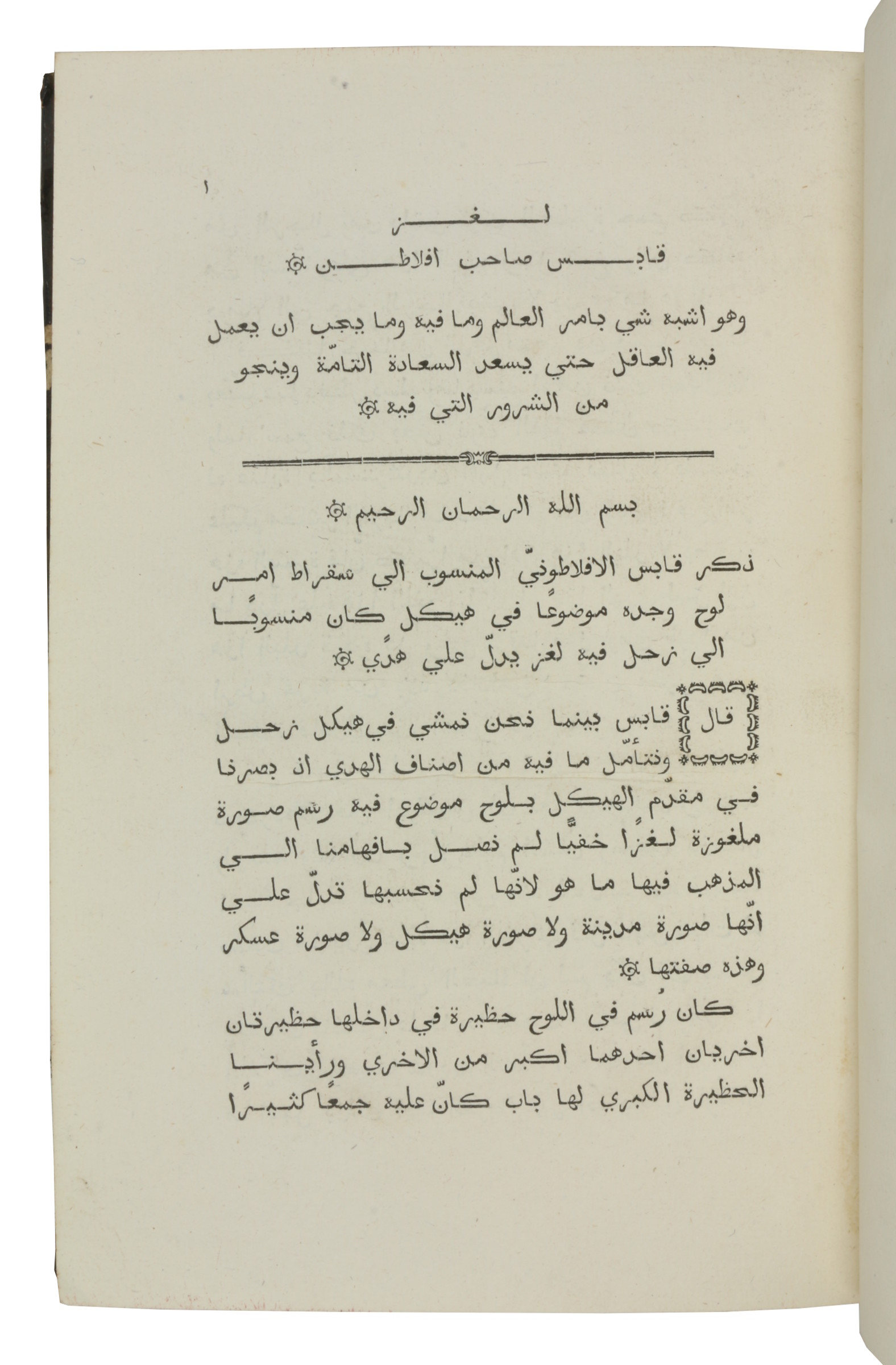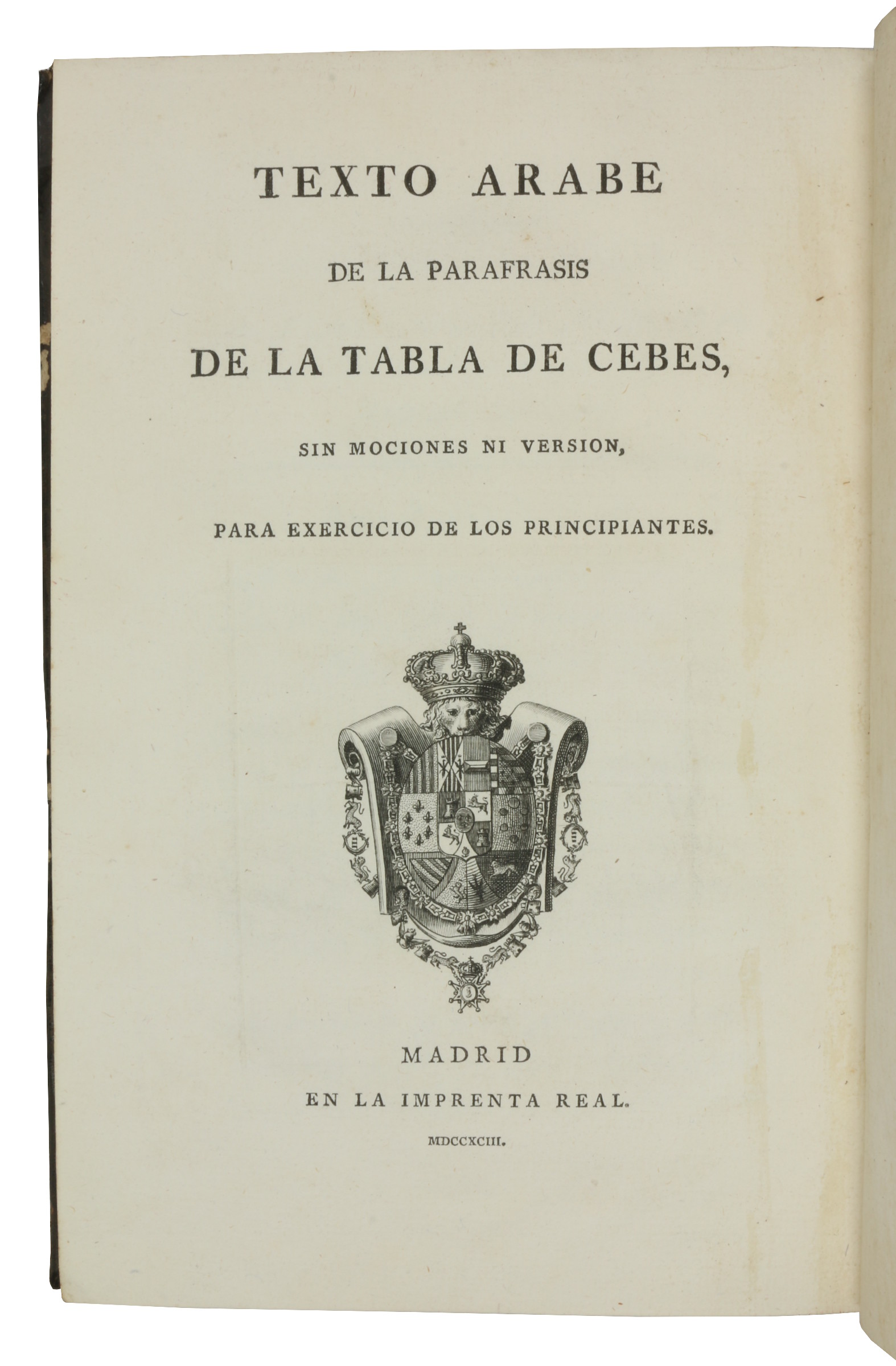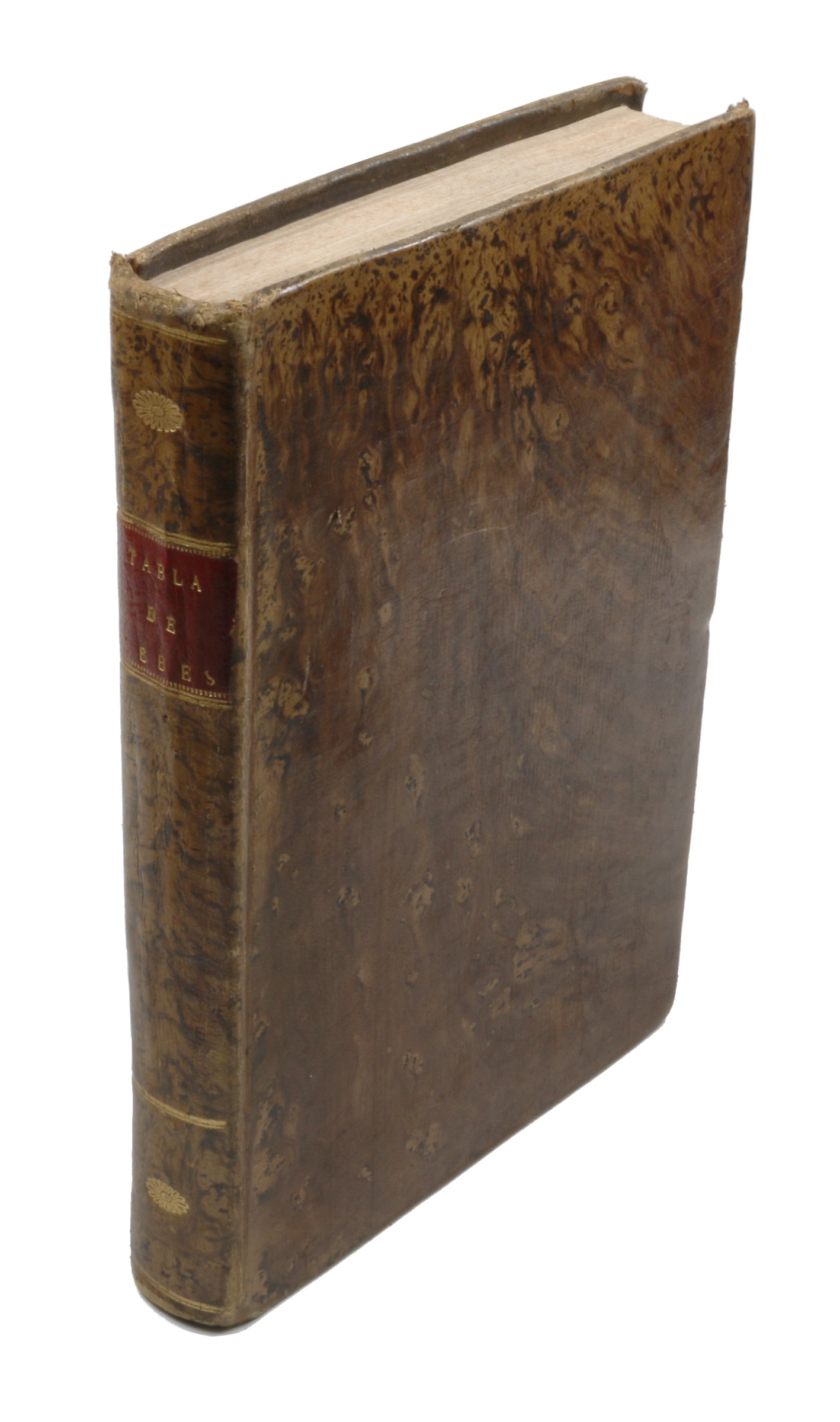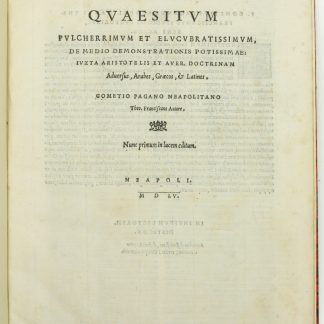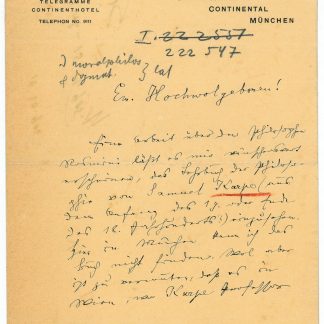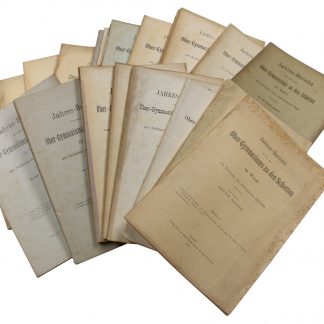Arabic Neo-Platonism
Parafrasis arabe de la tabla de Cebes, traducida en Castellano é illustrada con notas por D. Pablo Lozano y Casela. - Texto arabe de la parafrasis de la Tabla de Cebes, sin mociones ni version, para exercicio de los principantes.
Large 4to (158 x 240 mm). (6), 219, XL, (29) pp. With different engraved vignette on each title-page and folding engraved plate. Contemporary Spanish marbled calf, flat spine with red morocco lettering-piece. Marbled endpapers. Edges sprinkled red.
€ 4,500.00
First joint edition in Arabic and Spanish.
The Neoplatonist Persian philosopher Ibn Miskawayh (932-1030) worked as a chancery official and librarian for various viziers of the Abbasid empire; many of his works show and document the influence of Greek philosophy on his thought. His Arabic paraphrase occasionally contains additional passages not recorded in the original Greek text.
The "Pinax" ("Table" or "Painting") is an allegorical moral sketch of human life commonly attributed to the Greek philosopher Cebes, a student of Socrates, though the book's real author likely flourished in the first century AD. The Neoplatonist and Pythagorean perspective of late Hellenistic Stocism earned the text great popularity among later readers: "To us, all this appears sterile and trite; yet its impact was such that even the visual arts attempted to recreate a fiction whose author in fact shows little graphic flair" (Wilamowitz). One such attempt to transfer the titular "painting" into an engraving is found in the present edition.
Extremities quite insignificantly rubbed; a very appealingly preserved copy.
Hoffmann I, 447. Palau 50822 ("Bella edición"). Not in Engelmann/Preuss.



